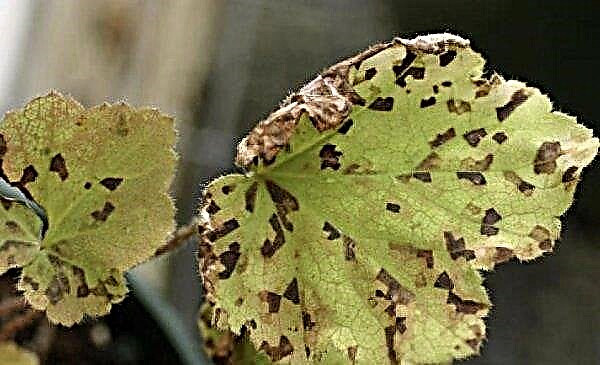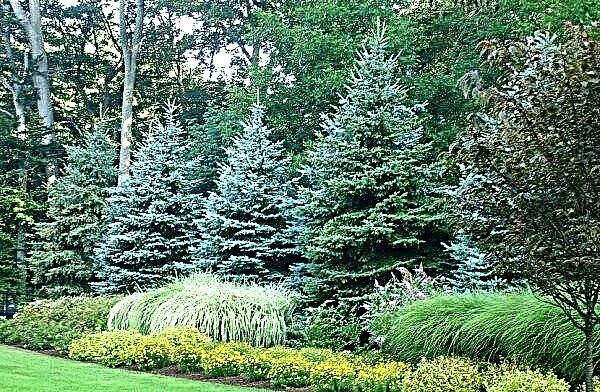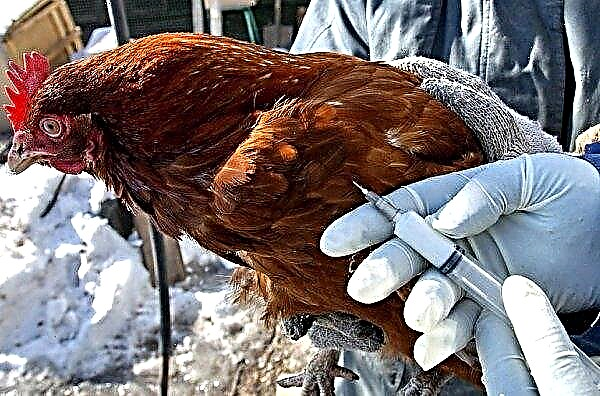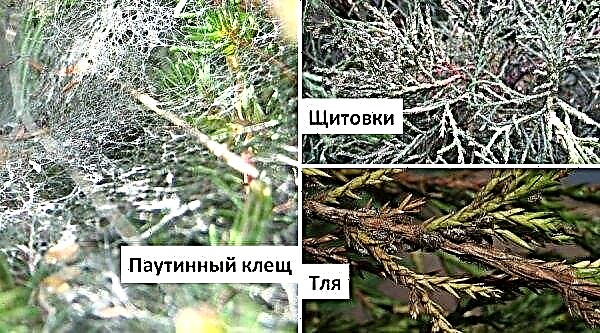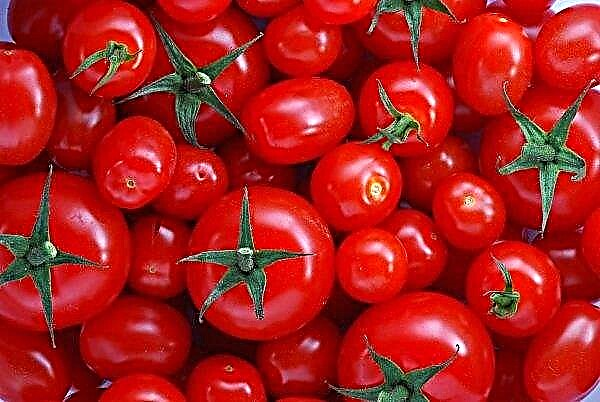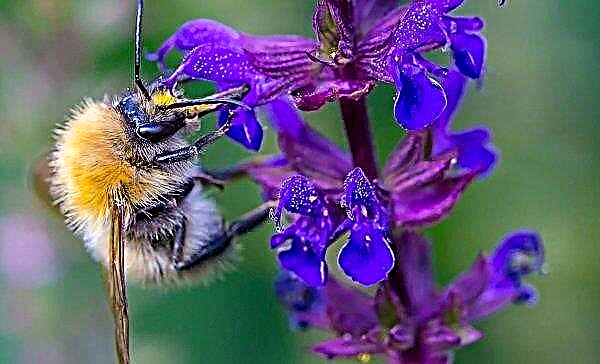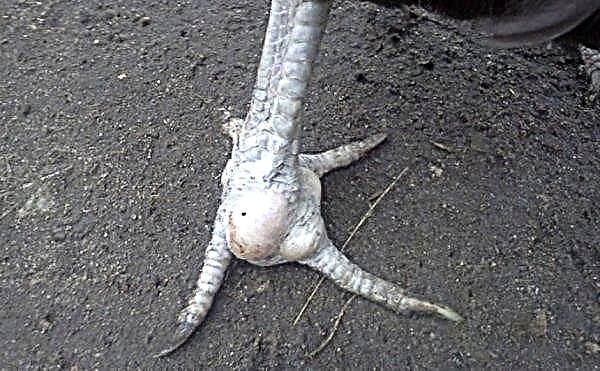When growing calathea at home, some gardeners face the problem of dried and twisted leaves. There is a large list of factors that could provoke such a situation. Before resorting to any measures to rectify the situation, the root cause should be identified.
Improper care or conditions
Plant health is primarily affected by the quality of care for it. Drying leaves in calathea can also be the result of an incorrect approach to growing.
Did you know? The name "calathea" unites a large genus of the Marantov family. Their homeland is located in the Americas.
Dry air
Calathe need a lot of moisture in the air. It is optimal to provide humidity of at least 85–90%. If it is impossible to raise it to such a level, the ends of the leaves begin to dry in the calathea.
In order to prevent this condition, you should resort to measures to moisturize:
- Spraying with water at room temperature. It is highly desirable that it is not rigid, it is better to filter it carefully or defend for a day. Spraying should be daily.
- Increase moisture by installing a humidifier. This is the best option that allows you to control the level of humidity.
- Installation of pallets with moist expanded clay. In such a tray you need to put a pot of calathea. It is important that the container has drainage holes.

Draft
Besides the fact that this plant suffers from dryness, it can also begin to dry after exposure to draft. Particularly dangerous are the regular effects of sudden winds. If you have to ventilate the room, you need to ensure that drafts are not created.
Important! Do not greatly obscure the calatea, since the color of the leaves in this case will become uniform, which in part makes it less attractive.
Sudden changes in temperature
In the room where the flowerpot with calathea is located, there must be a stable temperature within +16 ... + 19 ° С. If there are sharp jumps in temperature, the plant may suffer and begin to show symptoms in the form of dryness and curl of foliage.
Direct sunlight
Dry leaf plates may indicate sunburn. This situation is possible with intense exposure to sunlight. Affected leaves may begin to fall off the stems. To help the plant, you should rearrange it a little further from the window.
Insufficient watering
As stated above, calathea loves moisture. This parameter applies not only to air, but also to soil. Watering should be plentiful, since the roots of this plant need a sufficient amount of moisture. However, do not seek excessive moisture. The substrate should be watered as the upper ball dries, preventing the solidification of the earthen coma.
Did you know? The genus Kalatea includes 286 different species.
Lack or excess of fertilizer
Feeding is very important for calathea. For its healthy state, it is necessary to apply fertilizers in the correct amount. The established measure can neither be exceeded nor lowered, since this will negatively affect the state of both the leaves and the plant as a whole. When feeding, it is necessary to pay attention to their frequency. So, from the beginning of spring to the end of summer they need to fertilize the soil every 14 days. From the beginning of autumn to the end of winter, the frequency is reduced to 1 time in 1.5 months.
Incorrect soil
Perhaps the reason for the drying of the sheet plates lies in the initially improperly selected substrate. Calathea poorly develops in acidic soils containing lime. Optimum for it will be soil prepared from earth and coniferous humus in a 2: 1 ratio. It is also advisable to add additives to this mixture for better air permeability. A great option would be sand in large fractions or perlite.
Pests
If there are no problems with leaving, then the cause of the appearance of dryness on the foliage may lie in the attack of pests. It is important to identify them in a timely manner and resort to therapeutic measures.
Spider mite
The spider mite looks like a small insect whitish or burgundy. The main reason for its appearance is excessive air dryness.
Symptoms of a spider mite attack are as follows:
- web-like plaque;
- light spots and spots on the leaves.

Treatment should be carried out immediately after detection of the pest. The affected parts should be removed, and the plant itself should be treated with an insecticide, for example, Actellic.
Shield
Scabies look like translucent rounded insects, covered with a kind of shield or shell. Often, infection occurs after contact with another infected plant. Also, this pest can get to calathea along with poor-quality infected soil.
The signs of the appearance of the scale are as follows:
- pests adhering to leaf plates and stems;
- spots of dark brown color on the foliage;
- lethargy, dullness.

Before using the preparations, the plant should be treated with a soap solution, while removing pests manually. Next, you need to treat the plant with an insecticide. Fitoverm or any other remedy is well suited.
Thrips
Thrips are small and almost invisible pests having an oblong shape and a length of several millimeters. Most often, they appear with too much watering and stagnation of water in the soil.
Their presence can be detected by the following symptoms:
- whitish blotches on the sheets;
- hole formation on the plates;
- foliage drying.
 It is necessary to treat immediately with the use of an insecticide. You can use Inta-vir, which is popular with gardeners, which will help solve a problem that has arisen.
It is necessary to treat immediately with the use of an insecticide. You can use Inta-vir, which is popular with gardeners, which will help solve a problem that has arisen.Important! When using means for removing pests, it is necessary to adhere to safety precautions and not to allow them to enter the mucous membranes.
An unpleasant problem in the form of dried and swirling foliage in calathea is the result of one of many possible causes. To prevent its occurrence, you should adhere to the rules of caring for the plant. If the disease began to develop, it is urgent to use the known methods of treatment.

